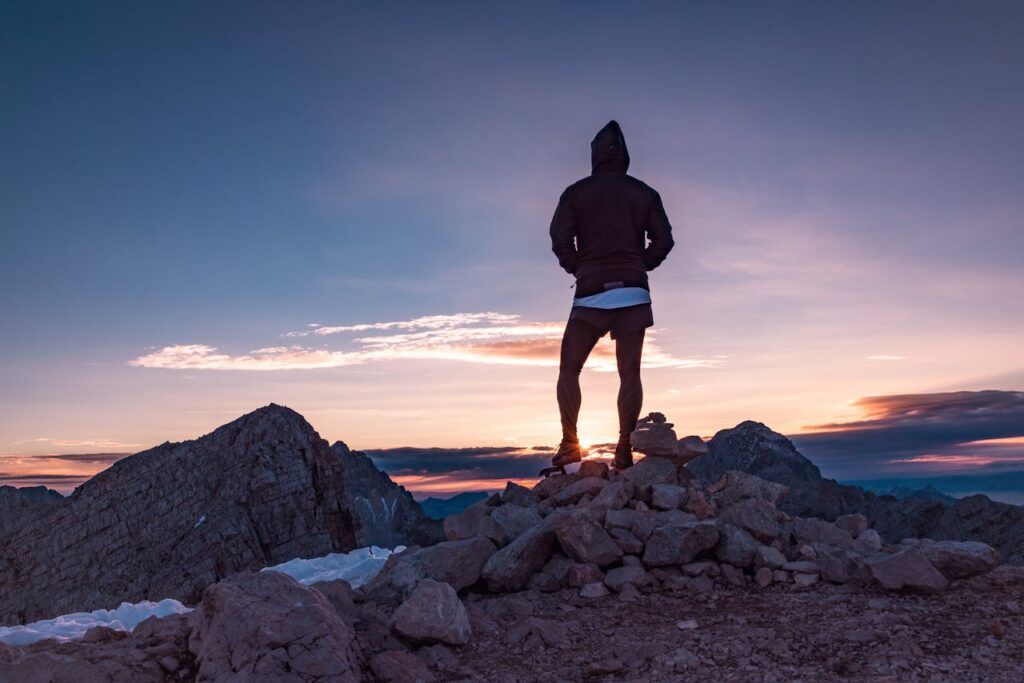
Explore & Play
Discover interesting topics and solve the accompanying crossword puzzle.
Peak Crossword | Clues from the World’s Highest Peaks
Table of Contents
Welcome to our exploration of the world’s highest mountains! You have the option to start by playing the Peak crossword to test your knowledge about these incredible summits. Alternatively, if you’re not very familiar with this topic, feel free to read the article first to gain some insights, and then return to tackle the crossword. Enjoy your journey through these majestic peaks!
Peak Crossword
You can either fill in the crossword puzzle directly on this page or click the button in the bottom right corner to print it for free.

The World's Tallest Peaks: Exploring the Highest Mountains Across Continents
I. Introduction
From the majestic heights of Everest to the iconic silhouette of Kilimanjaro, the world’s tallest peaks captivate adventurers and nature lovers alike. These towering giants not only shape the landscape but also influence the cultures and experiences of the people who inhabit them. In this article, we will explore some of the most famous peaks across the globe, discussing their significance, challenges, and the rich stories they tell. Along the way, we will introduce a crossword puzzle that highlights these remarkable mountains, allowing you to test your knowledge and appreciation for these natural wonders.
II. The Seven Summits: A Global Challenge
A. Overview of the Seven Summits
The Seven Summits represent the ultimate climbing challenge for mountaineers, encompassing the highest peaks on each continent. Successfully summiting all seven is a prestigious feat that few adventurers accomplish. Here is a closer look at these monumental mountains:
- Everest (Asia): Standing at 8,848 meters (29,029 feet), Everest is not only the highest mountain in the world but also a symbol of human determination and resilience.
- Aconcagua (South America): At 6,961 meters (22,838 feet), Aconcagua is the tallest peak in South America and offers breathtaking views of the Andes.
- Denali (North America): Previously known as Mount McKinley, Denali rises to 6,190 meters (20,310 feet) and is renowned for its harsh weather conditions and stunning scenery.
- Kilimanjaro (Africa): This iconic peak reaches 5,895 meters (19,341 feet) and attracts thousands of trekkers each year with its diverse ecosystems.
- Elbrus (Europe): As Europe’s highest peak at 5,642 meters (18,510 feet), Elbrus is part of the Caucasus mountain range and offers a unique blend of cultures.
- Vinson (Antarctica): The highest peak in Antarctica, Vinson stands at 4,892 meters (16,050 feet) and is a true expedition challenge due to its remote location.
- Mont Blanc (Europe): Towering at 4,808 meters (15,774 feet), Mont Blanc is a favorite among climbers in the Alps, offering stunning views and thrilling climbs.
B. Climbing the Seven Summits
Climbing each of the Seven Summits requires unique skills and preparation, making it a significant achievement in the mountaineering community. Each peak presents its own set of challenges, from extreme altitudes to unpredictable weather. For instance, climbers tackling Everest must acclimatize to the high altitude, while those attempting Aconcagua should be prepared for harsh winds and temperature fluctuations.
Preparation is key. Aspiring climbers should engage in rigorous physical training, focusing on endurance and strength. Additionally, they should gain experience on smaller peaks to develop the necessary technical skills for tackling these formidable giants.
III. Iconic Peaks Around the World
A. The Mighty Himalayas
Home to some of the tallest peaks in the world, the Himalayas are a treasure trove of adventure and breathtaking scenery. These mountains not only attract climbers but also serve as a source of inspiration for many.
1. Everest (Qomolangma)
Known as Qomolangma in Tibetan, Everest is revered not just for its height but also for the legends surrounding it. Climbing Everest requires both physical stamina and mental fortitude. The journey to its summit is fraught with peril, yet the reward of standing at the roof of the world is unparalleled.
2. K2
K2, known as the “Savage Mountain,” is notorious for its challenging conditions. At 8,611 meters (28,251 feet), it is the second-highest peak in the world. Many climbers regard K2 as a more difficult ascent than Everest due to its steepness and unpredictable weather.
3. Iztaccihuatl
The third-highest mountain in Mexico, Iztaccihuatl, stands at 5,230 meters (17,159 feet). Its name translates to “White Woman,” and it features a distinctive profile resembling a sleeping woman. Climbing Iztaccihuatl provides stunning views of the surrounding landscape and a glimpse into Mexico’s cultural heritage.
B. Peaks of the Americas
The Americas boast diverse landscapes, from the rugged Rockies to the lush Andes, each with its own iconic peaks.
1. Aconcagua
As the tallest peak in South America, Aconcagua attracts climbers from around the globe. The mountain’s gentle slopes make it more accessible, yet its altitude still poses challenges, requiring climbers to acclimatize properly.
2. Denali
Denali, the highest peak in North America, is renowned for its extreme weather and rugged beauty. The journey to the summit involves technical climbing and navigating harsh conditions, making it a dream for experienced mountaineers.
3. Katahdin
Katahdin, located in Maine, is a key landmark in the Appalachian Trail. Rising to 1,606 meters (5,269 feet), it offers stunning views and diverse wildlife, making it a favorite for hikers and outdoor enthusiasts.
C. Iconic Volcanoes
Volcanoes are fascinating geological formations that offer stunning views and thrilling climbing experiences.
1. Kilimanjaro
Kilimanjaro is not only Africa’s highest peak but also one of the most climbed mountains in the world. Its unique ecosystems, ranging from rainforests to alpine deserts, provide a diverse experience for trekkers.
2. Cotopaxi
This active volcano in Ecuador stands at 5,897 meters (19,347 feet). Cotopaxi is known for its perfectly symmetrical cone and challenging climbing conditions. Adventurers often seek to conquer its summit for breathtaking views of the Andes.
3. Teide
Teide, located in Spain’s Canary Islands, is the highest mountain in Spain at 3,718 meters (12,198 feet). This stratovolcano offers stunning landscapes and is surrounded by unique flora and fauna.
D. European Wonders
Europe’s towering peaks are not only beautiful but also steeped in history and adventure.
1. Elbrus
Elbrus, the highest peak in Europe, rises to 5,642 meters (18,510 feet). Its accessibility and relatively gentle slopes attract climbers of varying experience levels, making it a popular choice for those looking to conquer their first major peak.
2. Mont Blanc
Mont Blanc, the highest peak in the Alps, stands at 4,808 meters (15,774 feet). It is a favorite among climbers and hikers, offering stunning views and diverse climbing routes.
3. Triglav
Triglav is the highest peak in Slovenia, reaching 2,864 meters (9,396 feet). Its significance is deeply rooted in Slovenian culture, and it is often considered a national symbol.
IV. The Beauty and Diversity of Mountain Ecosystems
Mountains are not just towering geological formations; they are vibrant ecosystems teeming with life. The beauty and diversity of mountain ecosystems vary significantly based on altitude, climate, and geographical location, creating unique habitats that support a wide range of flora and fauna.
A. Stratification of Mountain Ecosystems
Mountain ecosystems are characterized by distinct zones that change with elevation. As one ascends, the environment shifts, showcasing various climates and biological communities.
Lowland Zones: These regions are often rich in biodiversity, featuring dense forests and a variety of plants and animals. Trees such as oaks, pines, and maples dominate these areas, providing habitat for countless species, including birds, mammals, and insects.
Montane Zones: As altitude increases, the tree line is reached, typically between 2,500 and 3,000 meters. This zone is characterized by shorter trees and dense underbrush. Unique flora, such as alpine meadows filled with wildflowers, can thrive here, attracting various pollinators.
Alpine Zones: Above the tree line, the environment becomes harsher, with strong winds, colder temperatures, and thinner air. Vegetation is sparse, consisting mainly of resilient species like lichens, mosses, and small flowering plants. These plants have adapted to survive in extreme conditions, often growing close to the ground to resist harsh weather.
Nival Zones: At the highest elevations, where permanent snow and ice prevail, ecosystems are extremely limited. However, specialized organisms, such as snow algae, have adapted to thrive in these icy environments, contributing to the unique ecology of high mountains.
B. Flora and Fauna Adaptations
The plants and animals that inhabit mountain ecosystems exhibit remarkable adaptations to survive in challenging conditions.
Flora Adaptations: Mountain plants often have deep root systems to anchor them in rocky soil, while some possess thick, waxy leaves to reduce water loss. Others may exhibit a cushion-like growth form to minimize exposure to cold winds. Alpine flowers, such as edelweiss and alpine asters, bloom during the short summer months, taking advantage of the brief growing season.
Fauna Adaptations: Animals living in mountainous regions, such as mountain goats and snow leopards, have evolved specialized skills to navigate steep terrains. Many species, like the marmot and pika, hibernate to conserve energy during the harsh winter months. Others, like eagles and condors, are adept at soaring high above the peaks, taking advantage of thermal updrafts.
C. The Importance of Conservation
Mountain ecosystems are incredibly fragile and susceptible to the impacts of climate change, pollution, and human activities. As temperatures rise, habitats shift, and species face challenges in adapting to these changes. Conservation efforts are crucial to protecting these unique environments. Organizations are working to raise awareness, promote sustainable tourism, and establish protected areas to preserve the beauty and biodiversity of mountain ecosystems for future generations.
V. The Cultural Significance of Major Peaks
Beyond their physical presence, many mountains hold cultural and spiritual significance in various societies. For instance, Mount Olympus in Greece is steeped in mythology, believed to be the home of the gods. Similarly, Mount Ararat holds deep cultural importance in Armenian history, symbolizing national identity.
These peaks often inspire art, literature, and spiritual practices, serving as a backdrop for storytelling and community gatherings. Understanding the cultural narratives surrounding these mountains enriches our appreciation of their grandeur.
VI. Mountain Climbing: Skills and Preparation
Mountain climbing is a rewarding yet demanding activity that requires a combination of physical fitness, technical skills, and thorough preparation. Whether you are a beginner or an experienced climber, understanding the necessary skills and preparation can enhance your climbing experience and ensure safety on the mountains.
A. Physical Conditioning
Physical fitness is paramount for mountain climbing. Climbers need to develop strength, endurance, and flexibility to tackle challenging terrain and withstand the physical demands of ascents.
Strength Training: Focusing on building core strength, leg muscles, and upper body strength is essential. Exercises like squats, lunges, and pull-ups can help prepare climbers for the physical challenges they may face on the mountain.
Cardiovascular Endurance: Endurance training through activities such as running, cycling, or swimming can improve cardiovascular fitness. Climbers should aim for long-distance hikes or cardio workouts to build stamina for extended periods on the trail.
Flexibility and Balance: Stretching and balance exercises enhance flexibility, reducing the risk of injuries during climbs. Incorporating yoga or Pilates into training routines can improve overall balance and body awareness.
B. Technical Skills
In addition to physical fitness, climbers must develop specific technical skills relevant to the type of climbing they intend to undertake.
Basic Climbing Techniques: Understanding foot placement, body positioning, and movement techniques is crucial for both beginners and experienced climbers. Practicing on indoor climbing walls can build confidence and refine skills.
Navigation Skills: Being able to read maps, use a compass, and navigate in various weather conditions is essential for mountain climbing. Familiarity with GPS devices can also aid in safe navigation.
Rope Skills and Safety Practices: For more technical climbs, climbers must learn how to use ropes, harnesses, and carabiners properly. Techniques such as belaying, rappelling, and crevasse rescue are vital for safety in more challenging terrains.
C. Equipment and Gear
Choosing the right equipment and gear is essential for a successful and safe climbing experience.
Climbing Gear: Depending on the type of climb, essential gear may include climbing shoes, helmets, harnesses, and ropes. For ice climbing, specialized tools like crampons and ice axes are necessary.
Clothing: Dressing in layers is key to managing temperature and moisture. Moisture-wicking base layers, insulating mid-layers, and waterproof outer layers can protect climbers from harsh weather conditions.
Navigation and Safety Equipment: A map, compass, first aid kit, and emergency supplies should always be part of a climber’s pack. It is also advisable to carry a satellite phone or GPS device for emergencies, especially in remote areas.
D. Mental Preparation
Mental resilience is just as crucial as physical preparation. Climbers must cultivate a positive mindset and the ability to adapt to changing conditions.
Goal Setting: Establishing clear, achievable goals can help maintain motivation and focus during climbs. Whether it’s summiting a peak or completing a challenging section of the trail, setting goals can provide a sense of accomplishment.
Stress Management: Developing techniques to manage stress, such as deep breathing or visualization, can enhance focus and decision-making during climbs. Preparing mentally for unexpected challenges is key to staying composed on the mountain.
Team Dynamics: Climbing often involves teamwork, requiring effective communication and collaboration. Understanding group dynamics and building trust within the climbing team can enhance safety and the overall experience.
VII. The Impact of Climate Change on Mountainous Regions
Climate change poses significant challenges to the world’s tallest peaks and their ecosystems. Glaciers are rapidly melting, affecting water sources for millions of people living downstream. For example, the glaciers on Kilimanjaro have shrunk dramatically over the past century, impacting not only the local ecosystem but also tourism.
Furthermore, changes in weather patterns are making climbing conditions more unpredictable. As temperatures rise, storms become more frequent, and the delicate balance of mountain ecosystems is disrupted. It is crucial to address these environmental issues to preserve the beauty and biodiversity of these majestic peaks.
VIII. Exploring the Peaks: A Journey Worth Taking
Exploring the world’s tallest peaks offers not just breathtaking views but also a deeper understanding of our planet’s geography and cultures. Whether you are an experienced climber or a casual hiker, these mountains provide an opportunity to connect with nature and challenge yourself. The stories and experiences shared by those who have traversed these heights inspire others to embark on their own adventures.
Ready to test your knowledge of these incredible mountains? Dive into our crossword puzzle, featuring clues related to the tallest peaks discussed in this article. Challenge yourself and discover how much you truly know about the world’s highest mountains!
Share to...
I hope you enjoy the content.
Want to receive our daily crossword puzzle or article? Subscribe!
You may also be interested in
Share to…
Want to receive our daily crossword puzzle?
-
Jigsaw Puzzles
Majestic Unicorn Watercolor Puzzle 250 | 300 | 500 Brikker
kr 348,00 – kr 439,00Price range: kr 348,00 through kr 439,00 Select options This product has multiple variants. The options may be chosen on the product page -
Jigsaw Puzzles
Majestic Stag Watercolor Jigsaw Puzzle 250 | 300 | 500 Pieces
kr 348,00 – kr 439,00Price range: kr 348,00 through kr 439,00 Select options This product has multiple variants. The options may be chosen on the product page -
Jigsaw Puzzles
Art Nouveau Jigsaw Puzzle with Betta Fish in Lush Garden Scene 250 | 300 | 500 Pieces
kr 348,00 – kr 439,00Price range: kr 348,00 through kr 439,00 Select options This product has multiple variants. The options may be chosen on the product page

















